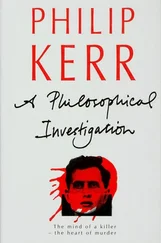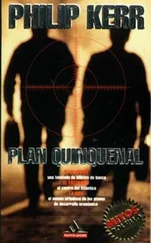Death doesn’t always have a smell, but it often has a distinctive feel, as if the silent wraith that has just crept away with a man’s soul brushes against the edge of your own, like an invisible man on a crowded U-Bahn train. It can be unnerving at times. It was like that here and I almost didn’t go any farther into the house out of a reluctance to witness what I might see. You would think a Murder Commission detective would be used to looking at terrible things. But the truth is, you never are. Every horrible murder is horrible in its own way and the pictures of these can never be erased from your mind; even at the best of times my own memories often resemble a series of uglier paintings by George Grosz and Otto Dix. I sometimes ask myself if my temperament might have been very different if I hadn’t seen so many crime scenes.
I forced myself to walk through a house that looked as if it was already accustomed to violent death. A rabbit lay half-skinned on the kitchen table while the walls of the hallway and the sitting room were full of various animal trophies — deer, badgers, foxes; it might have been my imagination, but they were all looking quite pleased with the way things had turned out. The probable author of their collective misfortune was history. I knew that as soon as I walked into the house. Udo Ambros was lying on the stone floor of the kitchen with his feet through the open door, although to be honest I wasn’t absolutely sure it was him. A shotgun blast to the head at close range has a capacity to make nonsense of things like a man’s identity. I’ve seen decapitated men at Plötzensee who had more of a head to speak of than Udo Ambros. There’s no such thing as a cry for help when the suicide involves a shotgun; the victim always means it. Pieces of skull and brain and gouts of blood had made such a mess of the kitchen that it resembled a direct hit on a trench at Verdun and, had I not been standing in the dead man’s own kitchen, the only reason I could have recognized him at all would have been the Good Luck from Berchtesgaden Salt Mines badge he was wearing in the lapel of his bloodstained Tracht jacket. A whole piece of his face, including the eye, was sticking to the tiled wall above the stove like a piece of a mural by Picasso or the relief on a Roman fountain. I swallowed hard, as if to remind myself I had a neck to which a head was attached, but kept on looking all the same.
I lifted up the dead man’s shirt and put my hand on his chest; the body was quite cold and I guessed he must have been dead for at least eight hours. He was still clutching the shotgun, which lay between his outstretched legs like the sword on a Templar’s tomb. I wrested the gun from his dead fingers. It was a Merkel side-by-side with a Kersten bolting mechanism, one of the more desirable German shotguns. I broke it open to reveal two red Brenneke slugs in the barrels, only one of which had been discharged. Not that it would have needed two; an ordinary shotgun cartridge filled with buckshot would certainly have done the job, but a slug that could have brought down a charging wild boar was making absolutely sure of it, like using a three-kilo hammer to crack an egg. I’d seen these slugs before, but for the life of me I couldn’t remember exactly where. I’d seen so much lately that I didn’t know where I’d left my own arsehole. The only question was, why had he done it? The man I’d met the previous day hadn’t looked as if he’d had much on his mind except the enjoyment of my own discomfort; then again, he must have known I’d trace the Mannlicher carbine to him eventually. And when I did, things would have gone very badly for Udo Ambros. Very badly indeed. The Gestapo would have made quite sure of that. I hadn’t cared to think about what might happen to Karl Flex’s murderer when I caught him but I knew the Nazis well enough to be sure it could so easily have been something worse than the falling ax.
After a while I looked around for a suicide note and found one inside an envelope on the mantelpiece above a wood fire that was still warm to the touch. It was about now I started to wonder why a man who was planning to blow his head off would bother to build a large fire and start skinning a rabbit and pour a full cup of coffee that was still on the table, and I hoped that the note would explain all that.
TO WHOM IT MAY CONCERN. I HAVE KILLED MYSELF BECAUSE IT’S ONLY A MATTER OF TIME BEFORE THAT BERLIN COPPER TRACES THE NUMBER ON THAT MANNLICHER CARBINE AND GETS ME FOR THE MURDER OF KARL FLEX AND I DON’T WANT TO DIE, STARVED TO DEATH IN DACHAU LIKE JOHANN BRANDNER. FLEX WAS A BASTARD AND EVERYONE KNOWS HE HAD IT COMING. I LEAVE MY GUNS AND MY MOTORCYCLE TO MY OLD FRIENDS AND FELLOW HUNTSMEN, JOHANNES GEIGER AND JOHANN DIESBACH, AND THE REST OF MY STUFF TO ANY OF THEM WHO WANTS IT. SIGNED UDO AMBROS.
But the suicide note asked as many questions as it answered. It was the first one I’d seen that was entirely written in neat capital letters, almost as if Ambros had been keen to make sure that everything was quite clear and understood by the proper authorities; but it also managed to obscure something very important: the true handwriting of the man who’d written the note, which might have enabled me to determine absolutely — with the opinion of the huntsman Johannes Geiger, perhaps — that Ambros had indeed penned it. As it was, I had my doubts. Not least because there was a spot of blood on the corner of the paper about the size of a pinhead. Laboratory analysis might have proved that this was the rabbit’s blood and not a man’s, but the rabbit itself looked to have been properly drained and bled before the skinning had begun. I would have bet a small fortune that the blood had arrived on the notepaper from the head of Udo Ambros. Nothing unusual about that perhaps, except that the note had been inside an envelope. I wandered around the house opening creaky cupboards and smelly drawers and being generally nosy. Meanwhile I asked myself if Johann Brandner, my leading suspect, was dead after all — as the suicide note had alleged. It wouldn’t have been the first time that the Gestapo and the SS had lied about a death in Dachau, even to the criminal police. Death in Dachau might have been a normal occurrence but it was often treated by the authorities as something secret, to be hidden not just from concerned families but from everyone else as well. The few people who knew exactly what went on in Dachau were, I knew, the subject of a so-called Leader Order; and the only reason I knew about this was because Heydrich had once told me about it before sending me to Dachau himself. He was thoughtful like that. On the other hand, it was quite possible that Johann Brandner had returned to Berchtesgaden in secret, killed Udo Ambros, and hoped to put me off the scent by mentioning that he was dead in the suicide note. Being dead is a pretty good alibi for anyone who’s in trouble with the law, but in Nazi Germany it was an existential hazard.
Having seen a gun cupboard in the hallway behind the front door, I searched for keys and eventually found a set on a chain in the dead man’s trouser pocket. Which was when I started to become convinced that Udo Ambros had been murdered. Inside the gun cupboard were a couple of rifles, another shotgun, a Luger pistol, some rifle ammunition, and several boxes of Rottweil shotgun cartridges. Rottweil was owned by a company called RWS and after searching the entire house and the outbuildings I discovered that these were the only cartridges I could find anywhere; the two Brenneke slugs used to kill Ambros were made by Sellier & Bellot and the only two I ever found were the two in the gun, which strongly suggested to me that the murderer had probably brought his own ammunition. Perhaps he’d looked for some cartridges belonging to Ambros, realized they were safely locked away in the gun cupboard, and then been obliged to use the ones in his own pocket or ammunition belt. Which strongly suggested that the murder had not been one carefully planned beforehand; quite possibly the two men had met quite amicably and argued about something before the killer had slipped the two slugs into the victim’s gun and then shot him. Which also suggested that they were friends, or at least acquaintances. And given the contents of the suicide note, what else but my investigation and the provenance of the Mannlicher carbine would they have been arguing about?
Читать дальше












